
Printable do not stand at my grave and weep poem ascselink
One of the most popular bereavement poems in English, "Do Not Stand at My Grave and Weep" holds even more allure for its mysterious origins and many reinventions. A traditional, rhyming anti-elegy, the poem uses imagery and metaphor commonly associated with death and rebirth. The poem's voice, a direct address, reaches out to readers in.

Printable Do Not Stand At My Grave And Weep Poem Get Your Hands on Amazing Free Printables!
'Do Not Stand At My Grave And Weep' was outside the scope of the poll, but following a programme about war poems which featured the poem, 30,000 requests for copies descended on the BBC. Subsequently, a book of the poems that had been chosen as the Nation's Favourite Poems was published, and a decision was made to include 'Do Not Stand At My.
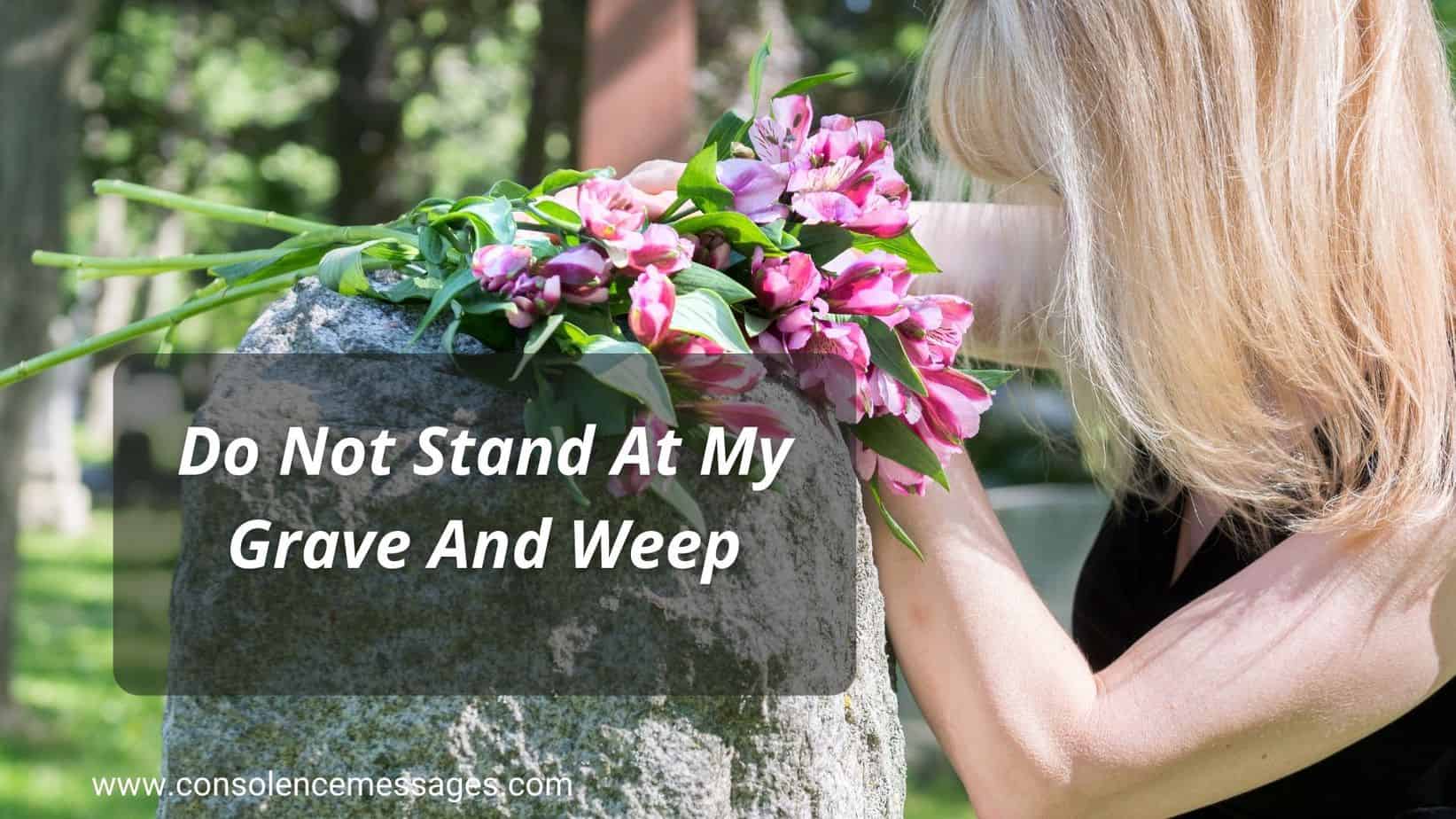
Do Not Stand at My Grave and Weep Art of Condolence
It begins: Do not stand at my grave and weep. I am not there. I do not sleep. The first line is a repetition of the title. The narrator, an unknown individual who we must assume is the deceased person, encourages the reader not to stand at their grave and cry. To cry at someone's grave is a pointless activity, they argue.
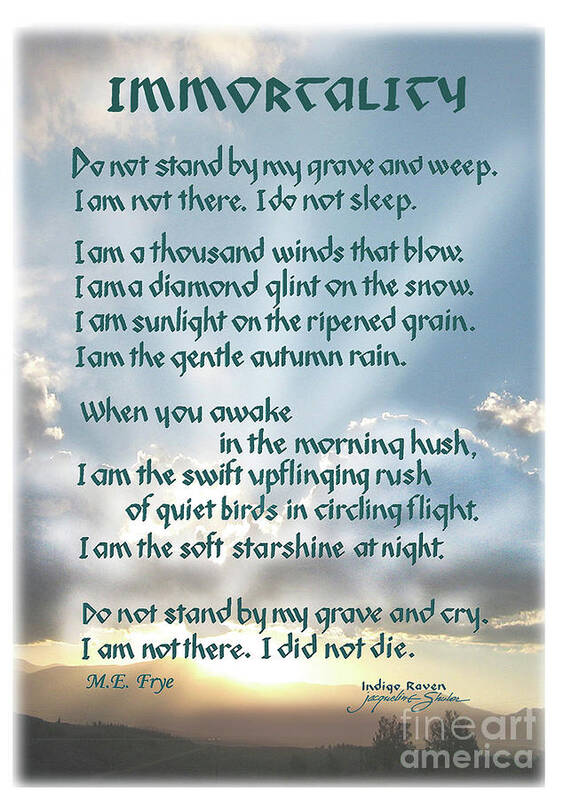
Do Not Stand At My Grave And Weep Poster by Jacqueline Shuler
Do Not Stand at My Grave and Weep Analysis. "Do Not Stand at My Grave and Weep" is a simple monologue, a monologue between the spirit of the dead person and her loved ones. The structure of the monologue provides a sense of relief between the spirit and her loved ones. The rhyme scheme in the poem is AABB; every two lines rhyme with each other.
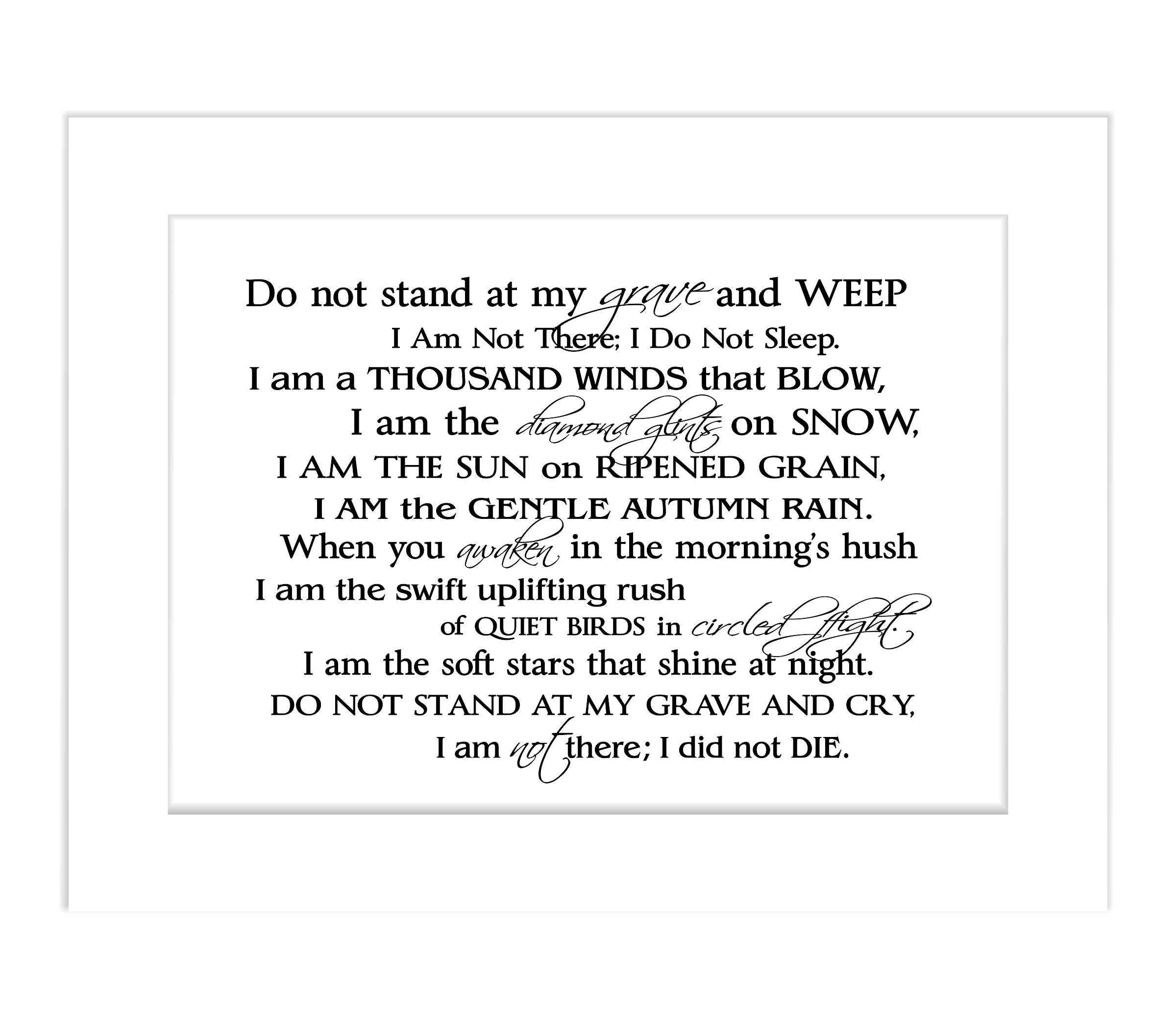
Do Not Stand at my Grave and Weep Poem by Mary E Frye Etsy
Read by Shane MorrisWritten by M. E. Frye-Full Poem:Do not stand at my grave and weepI am not there. I do not sleep.I am a thousand winds that blow.I am the.
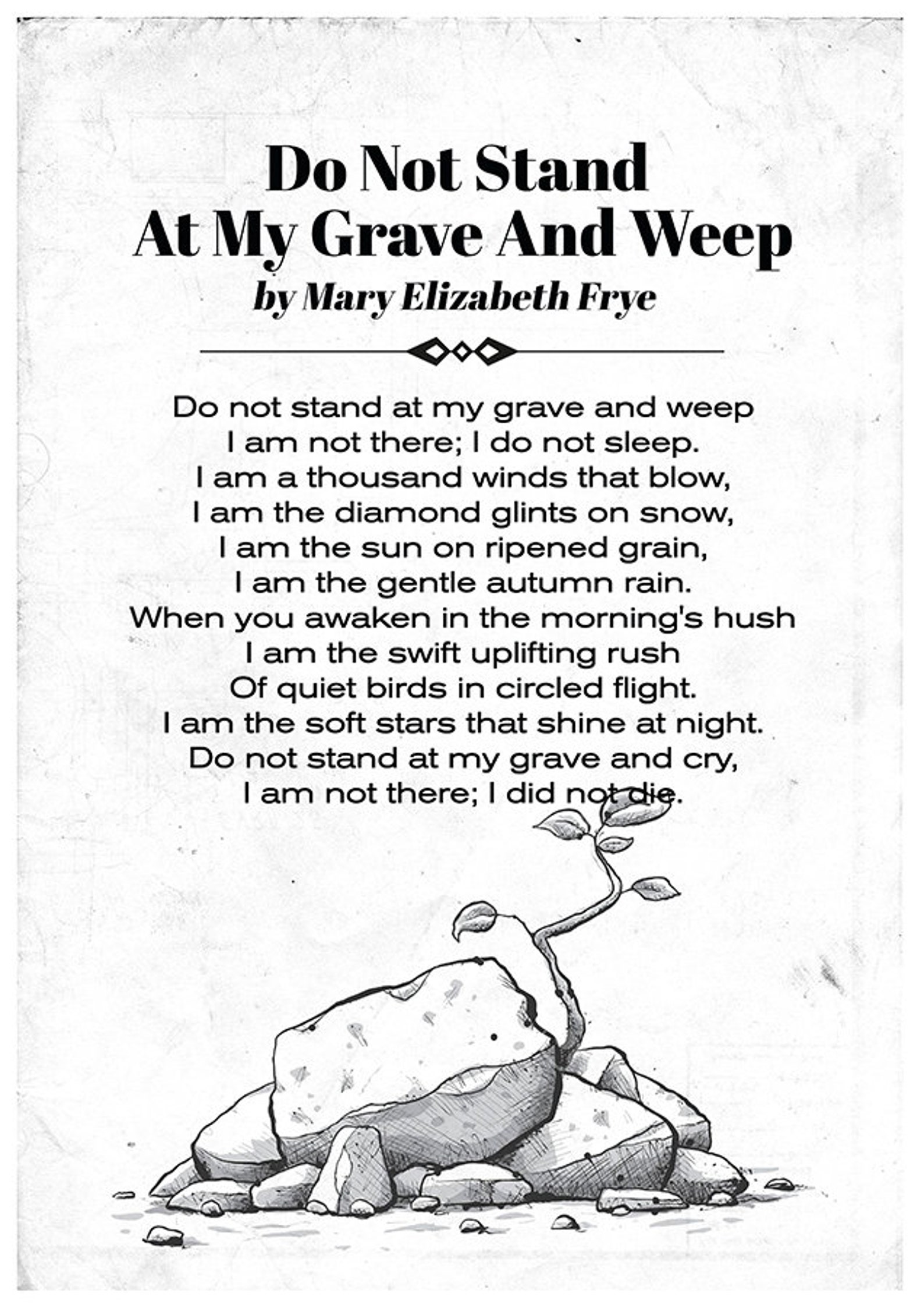
Do Not Stand at My Grave and Weep Mary Elizabeth Frye Poem Etsy
The poem on a gravestone at St Peter's church, Wapley, England. " Do not stand by my grave and weep " is the first line and popular title of the bereavement poem " Immortality ", written by Clare Harner in 1934. Often now used is a slight variant: "Do not stand at my grave and weep".
"Do not stand at my grave and weep" Mary Elizabeth Frye [1600 x 1200] [OC] r/QuotesPorn
Do not stand at my grave and weep, I am not there, I do not sleep. I am in a thousand winds that blow, I am the softly falling snow. I am the gentle showers of rain, I am the fields of ripening grain. I am in the morning hush, I am in the graceful rush Of beautiful birds in circling flight, I am the starshine of the night. I am in the flowers.
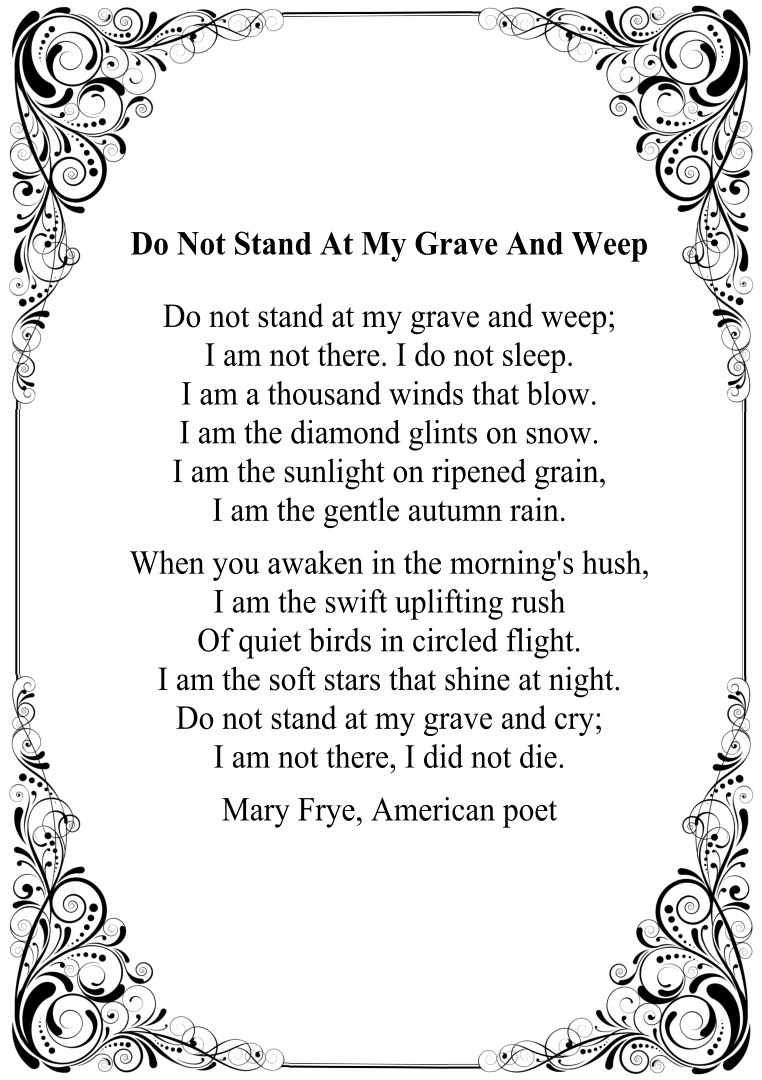
Poem do not stand at my grave and weep words listnsa
Do not stand at my grave and weep is the first line and popular title of this bereavement poem of disputed authorship. This extremely famous poem has been read at countless funerals and public occasions. There are in existence many slightly different versions of the poem. Written in the 1930's, it was repopularized during the late 1970s thanks to a reading by John Wayne at a funeral.

Image result for do not stand at my grave and weep poem Scripture quotes, Weeping, Autumn rain
In 1932, Clare's brother, died at only 31 years old. In December 1934, Clare Harner's poem "Immortality" (now well known as "Do Not Stand At My Grave And Weep") was published in The Gypsy all poetry magazine. "Immortality" was reprinted in the Kansas City Times on February 8, 1935. The Gypsy published one other poem of hers, "Where You Go.

Do Not Stand at My Grave and Weep Poem Mary Elizabeth Frye Etsy Australia
Mary Elizabeth Frye (1905-2004) was an American poet who remains known today almost exclusively for a single poem ― a curtal sonnet of just twelve lines―and yet it just may be the most popular poem in the English language! "Do not stand at my grave and weep" is a consoling Holocaust poem and elegy with an interesting genesis, since it was.
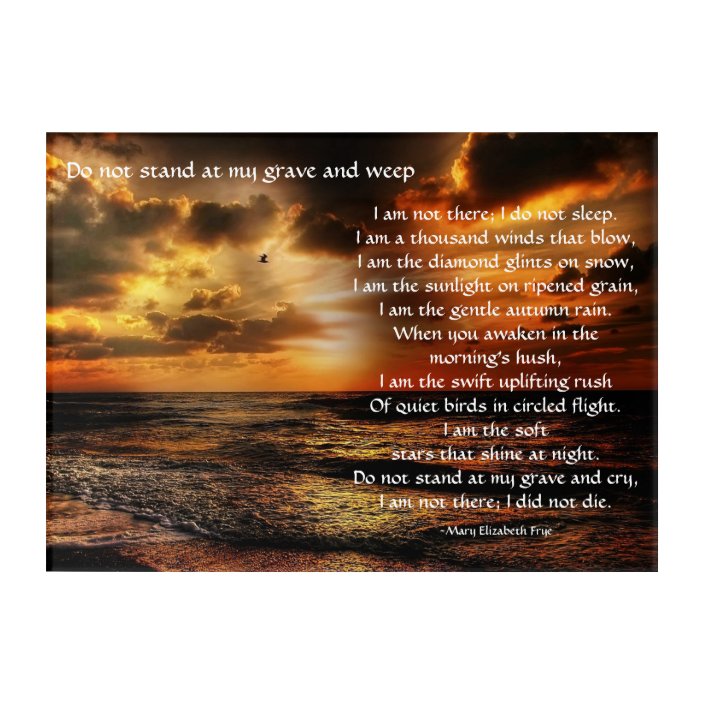
Do Not Stand at My Grave and Weep Poem Acrylic Print
Do Not Stand At My Grave and Weep, sung by Katherine Jenkins, Illustrated and with LyricsBased on the poem by Mary Elzabeth FryeDo not stand at my grave and.

Do not stand at my grave and weep illustration lasopaxpress
Popularity of "Do Not Stand at My Grave and Weep": Written by Mary Elizabeth Frye, a not-so-popular American writer and poet, "Do Not Stand at My Grave and Weep" is a suggestive poetic piece.The poem revolves around the idea of death and the afterlife. It alludes to the idea that the soul lives on after death, and suggests that one should find comfort in their faith and belief in the.
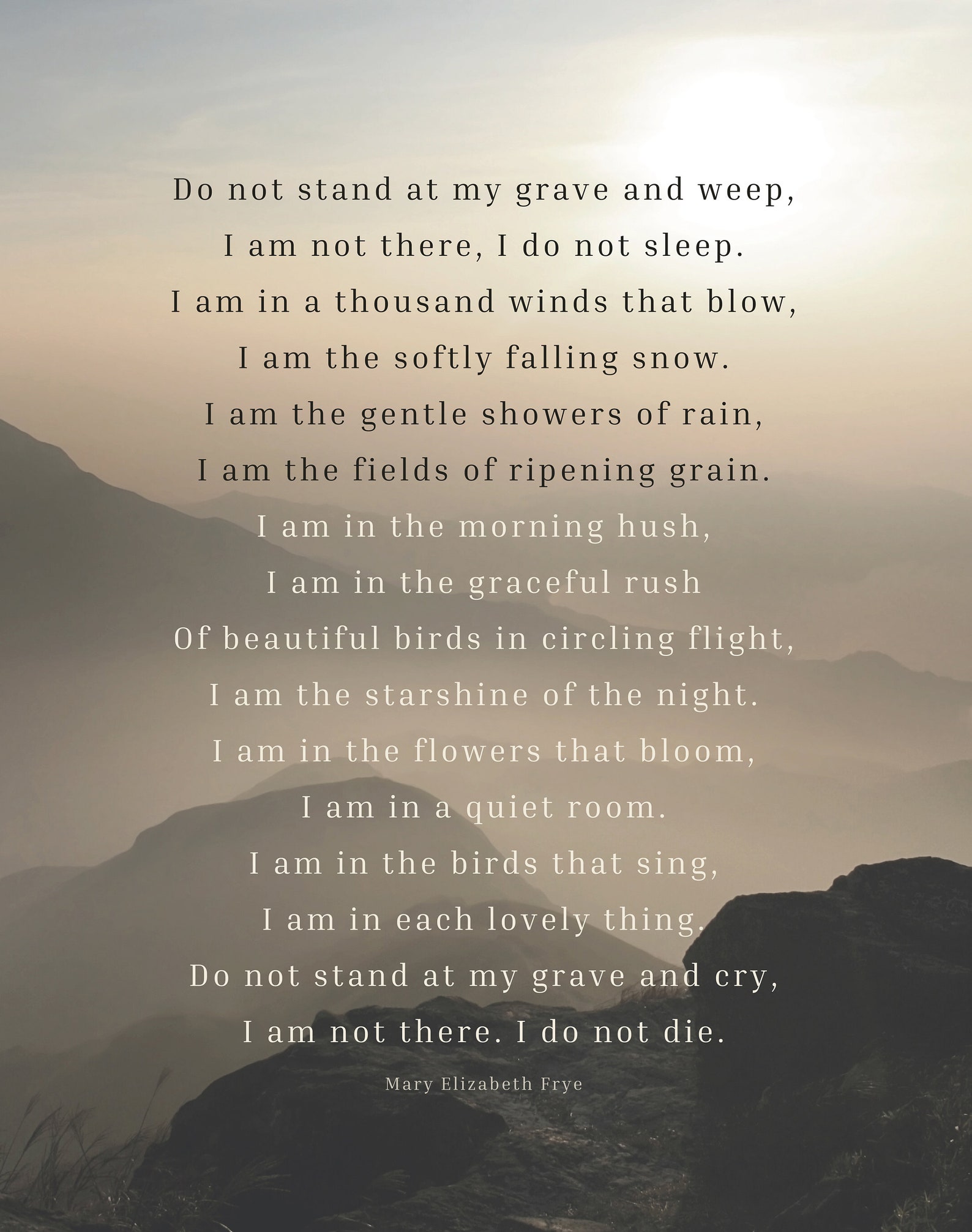
Do Not Stand At My Grave and Weep Instant Download Printable Etsy
Do not stand at my grave and weep, I am not there, I do not sleep I am the thousand winds that blow, I am the diamond glints on snow I am the sunlught on ripened grain, I am the gentle autumn rain When you awake in the morning hush, I am the swift uplifting rush Of quiet birds in circling flight

Do Not Stand at My Grave and Weep Mary Frye Grief Etsy UK
Mary Frye is an American poet best known for the piece 'Do Not Stand at My Grave and Weep.'. She was born on November 13, 1905 in Dayton. In this touching poem, 'Do Not Stand at My Grave and Weep', by Mary Frye, she speaks of death in a welcoming tone. She offers words of comfort for those who would mourn for her at her passing, and she.
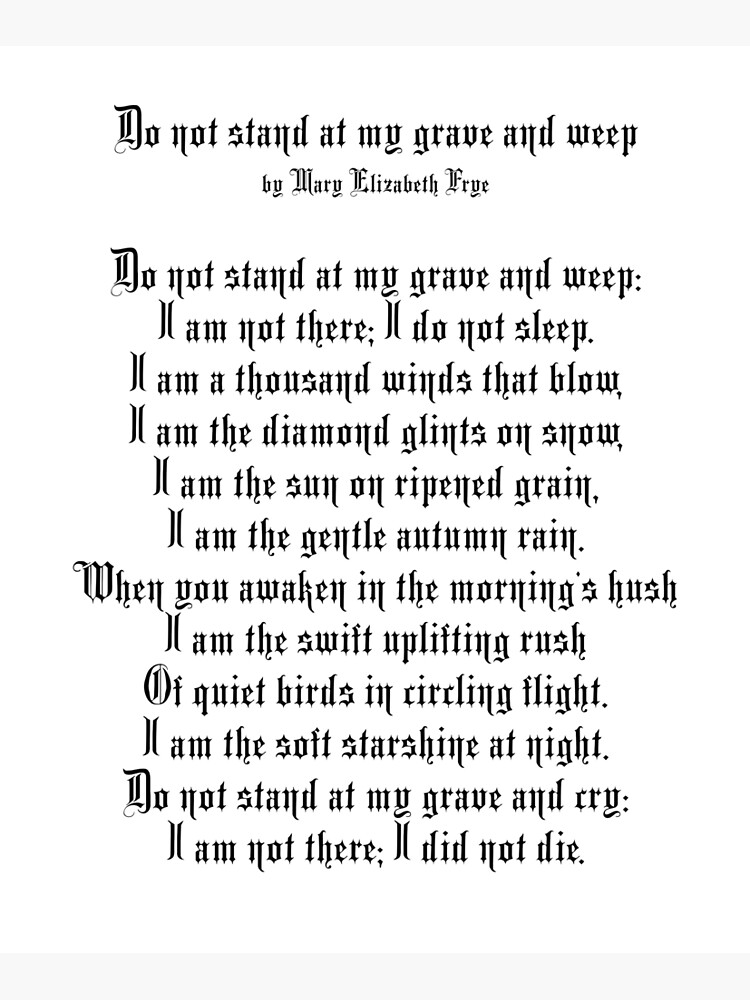
Printable Do Not Stand At My Grave And Weep Poem Printable Word Searches
Do Not Stand At My Grave And Weep. Do not stand at my grave and weep; I am not there. I do not sleep. I am a thousand winds that blow. I am the diamond glints on snow. I am the sunlight on ripened grain. I am the gentle autumn rain. When you awaken in the morning's hush.

Do Not Stand at My Grave and Weep The Story of Mary Frye's Poem HighExistence
Do not stand By my grave, and weep, I am not there, I do not sleep--I am the thousand winds that blow, I am the diamond glints in snow. I am the sunlight on ripened grain, I am the gentle, autumn rain. As you awake with morning's hush, I am the swift, up-flinging rush Of quiet birds in circling flight. I am the day transcending night. Do not stand By my grave, and cry-- I am not there, I did.
